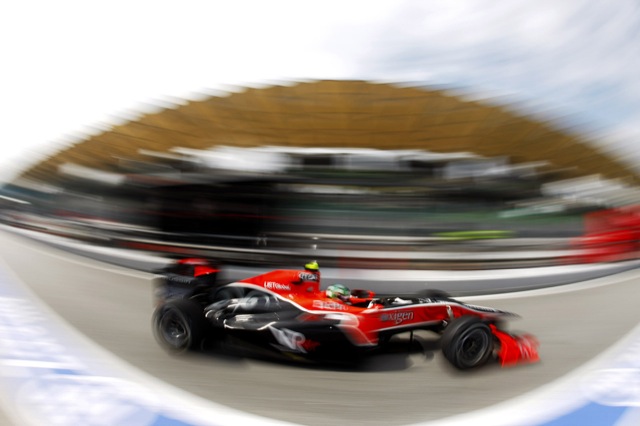 A couple of weeks ago, following the Turkish Grand Prix and Lewis Hamilton’s spectacular tyre failure, Bridgestone went on record as suggesting a possible cause of the incident. At the time, and all the time being speculative, the Japanese tyre manufacturer said that chunking may have occurred, and combined with a sudden external force may have been enough to de-stabilise it. Just about everyone stood up and asked what chunking was, which Bridgestone duly described as a build up of marbles on the tyre surface that can harden. Today, Bridgestone have confirmed chunking as the cause, but reversed their definition.
A couple of weeks ago, following the Turkish Grand Prix and Lewis Hamilton’s spectacular tyre failure, Bridgestone went on record as suggesting a possible cause of the incident. At the time, and all the time being speculative, the Japanese tyre manufacturer said that chunking may have occurred, and combined with a sudden external force may have been enough to de-stabilise it. Just about everyone stood up and asked what chunking was, which Bridgestone duly described as a build up of marbles on the tyre surface that can harden. Today, Bridgestone have confirmed chunking as the cause, but reversed their definition.
Head of Track Engineering Operations, Kees Van Der Grint now says that chunking is pieces of rubber leaving the tyre.
Chunking is when pieces of tyre leave the tread, usually due to either mechanical reasons or because of heat. There could be an internal blister, the rubber melts and then the holes which are created are called chunking. When pieces of the tread leave the tyre, we call the holes that are left ‘chunking’. Kees Van Der Grint.
Van Der Grint went on to talk more about Hamilton’s specific incident at turn nine in Turkey when the tyre finally let ago.
It didn’t only happen to Lewis; it happened on more cars. But on Lewis’s car, because of the tread breaking up, as a result of stress in this case, the belt area was not protected anymore. And then another force was applied from outside – maybe it was kerbs, maybe it was braking – and it was applied on the unprotected belt. Then the belt material broke, and that caused the belt to become separated and go flying away. Kees Van Der Grint.


















Add comment